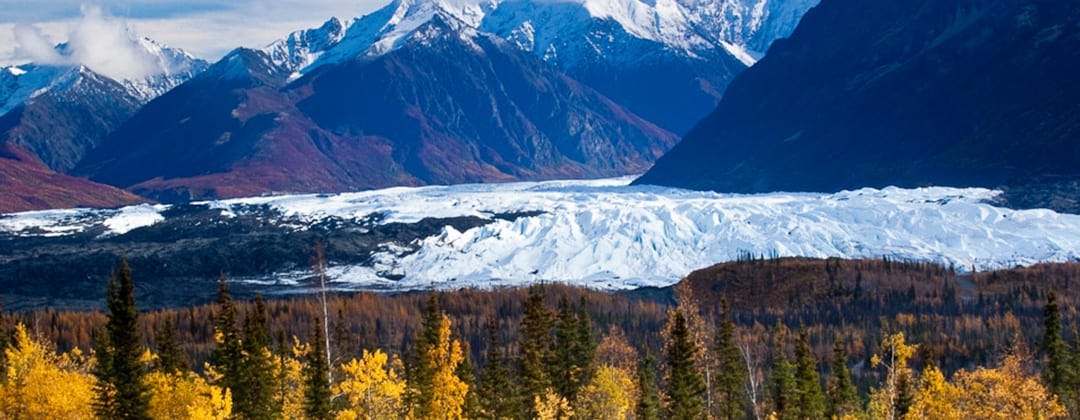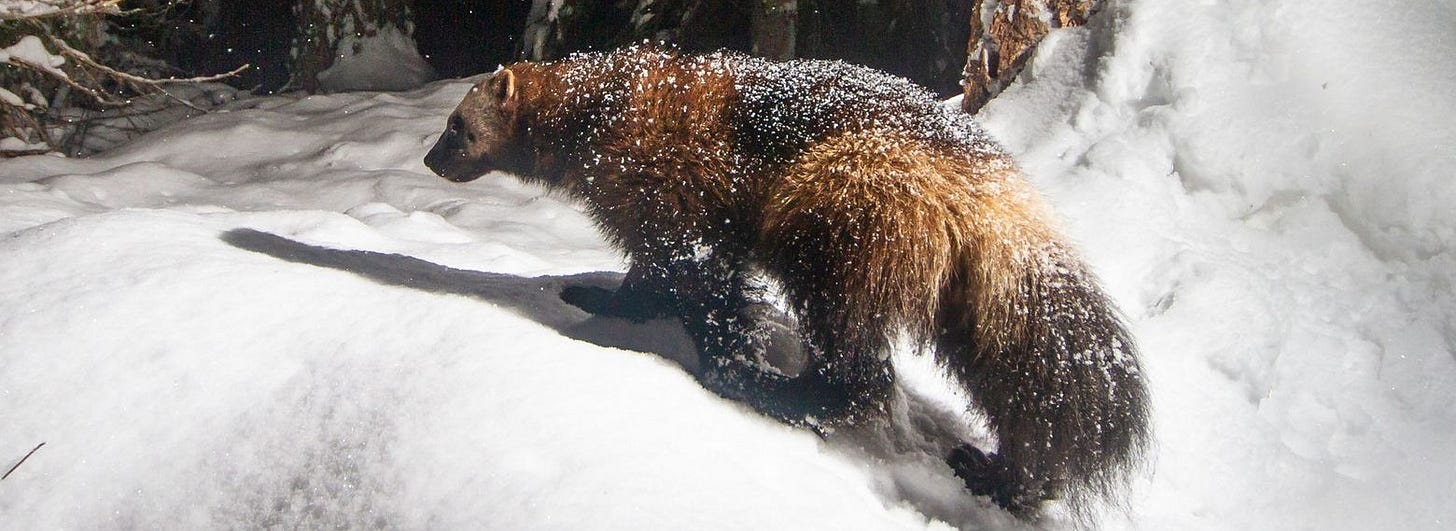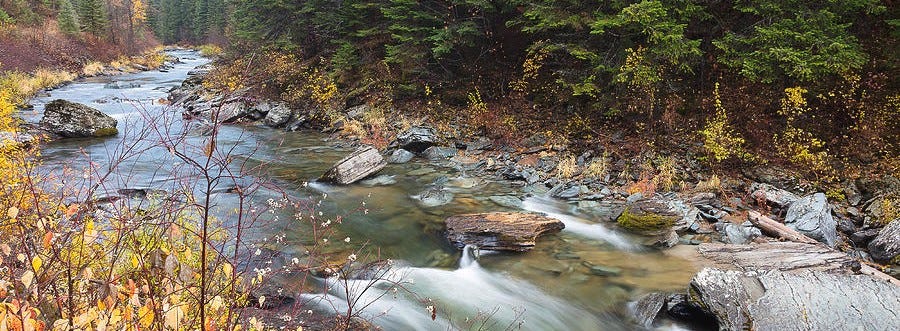If you can open up a newspaper or your Facebook or Twitter feed without seeing some activist or journalist crying over a melting glacier these days, it must indeed be a cold day in Texas.
Glaciers have been with us for quite some time, so it's understandable that we've become somewhat attached to them. How many pictures have you seen of a young person in shorts and t-shirt standing on a huge slab of ice in the middle of summer? Everyone needs to touch the ice at least once in their lives, right? For someone like myself living in the Canadian Great White North, I could easily do without, thank you very much.
Since time immemorial, glaciers have filled humankind with wonder - and dread. Can you imagine early humans, after having immigrated from the temperate climes of northern Africa to Europe, suddenly being plunged into such an unprecedented age of ice? Well alright, maybe it wasn't that sudden - or that unprecedented, but hey, it still must've sucked.
That reminds me of the sad story of the Irish brown bear.
About 40,000 years ago, during the height of the last ice age, these poor critters were running for their lives from huge, advancing sheets of ice that were attempting to take over the globe. Thankfully, these upstart glaciers were decidedly unsuccessful in their last attempt - as would be realized about 20,000 years later.
Sadly, the bears, not having had access to the Weather Network or any sort of accurate climate modeling software, had no idea how short-lived this world of ice would be. Consequently, in order to ensure the survival of their race, they decided to mate with their huge, white cousins that inhabited the far north. Not only did this result in near constant shaming from the more proper bears in the area, but eventually also ended up completely replacing the mitochondrial DNA of those ancient polar bears, creating our current crop of earth’s largest carnivores.
So I guess it wasn't a total loss. I mean, they survived, right? And not only that, they evolved into something much better. Possibly this interbreeding also enabled those polar bears to adapt when the ice began receding.
All dramatizations aside, what happened to the bears is basically what happened with our human ancestors as well (there may even have been cousins involved, though I'm really not sure about that). Regardless of the exact details, the biggest difference between the bears and our ancient ancestors was the size of their brains.
So, these early Cro-Magnon humans that were mercilessly plunged into freezing temperatures familiar only to those inhabiting Siberia or possibly Winnipeg - these big-brained mammals ended up with a real, pressing reason to make use of their big brains. Namely, survival of their species.
Even back then, Necessity was busy birthing her inventions and so of course one of the most important inventions in history came about during that life-threatening ice age. No, it wasn't the wheel - that didn't happen until the ice started melting, and it's a good thing too, since 40,000 years later, humans still haven't learned how to drive on ice. In retrospect, this was probably by design.
Anyway, this amazing invention that changed the course of history was (drum roll, please)…
Really, you say?
Well, apparently that's the case, and it really was a stupendous innovation because now, instead of just draping animal skins loosely over their shivering frames, it enabled ancient humans to actually make form-fitting clothing and become the coolest humans on the planet, as well as allowing them to stay warm with layered and insulated garments that could keep out the wind and help them survive the cruel winters. Humans are curiously creative creatures when we need to be, and we seem to be capable of almost anything we set our huge brains to.
Speaking of which, can you imagine humans 30,000 years ago who were so intent on surviving that major global cooling event that they actually adapted to it and created technology that helped them survive? I wonder if that has any implication to our current crisis…
As I wrote in Death by a Thousand Degrees, the biggest impact an increase of 2° celsius is likely to have on our world is a reduction in the yearly winter death toll due to "non-optimal ambient temperatures". Apparently people in hotter climates have already begun adapting to the increase in temperature, which might lead one to believe that all the wailing and doom-saying might actually be a little premature.
Back to the glaciers. I've read a bunch of articles recently that make a rather big deal of the huge amount of life that is literally teeming unseen at the bottom of every glacier on earth. I can only imagine this is meant to pull at the heart strings just a little bit as they get ready to tell us that soon they'll all be dead. Alright, so the fact that this life consists mainly of microscopic bacteria that feeds on like, rocks and things isn't stressed so much but hey, all lives matter, right? Now, whether this life would really cease to exist if the glaciers would someday disappear, I don't know, but my suspicion is that they (the bacteria) really don't give a rat’s frozen ass what the temperature of that thin film of water that they live in is at.
Now, think of what else on earth might be willing to move in if that glacier were to eventually disappear. The first thing would probably be lichens and moss, which apparently can survive underneath glaciers for thousands of years, so they may just be biding their time waiting for just the right moment to reemerge. Simply having those guys take hold on the rock would encourage soil to build up on there, which would then be followed by grass and small shrubs, and then eventually trees. Then come the birds, flowers, bees, thousands of varieties of insects. Probably the current version of brown bears would show up again only this time the polar bears would be calling on them. Then maybe even wolverines - who knows?
This whole process would likely only take a few hundred years. And if you're someone who is overly concerned about carbon sequestration (I'm not, but maybe you are), can you imagine what all this new greenery would do for the planet?
And while we're talking about greenery, let's not forget the other decidedly non-green areas of the planet - like our deserts.
I remember as a kid visiting our local desert ecosystem in Spruce Woods Provincial Park in southern Manitoba. Yes, there is indeed a desert in the middle of the Canadian prairies. Alright, it's technically not a real desert, but it sure looks like one, though it's a little different than the ones in California and New Mexico.
But it does have sand. Lots and lots of sand. And huge 30 metre dunes with cactus plants and other Canadian things like skinks and poison ivy. I've even heard tell of the odd rattlesnake sighting. So yeah, it's a pretty cool place, especially at night.
Now when you go there it actually looks a lot different than it did when I was a kid. In the last 40 years our desert has undergone quite a change. The sand is all still there, but much more of it is covered up in greenery. There's maybe a couple square miles left out of the five or six square miles that were there when I was young. Back in the day (like, a thousand years ago) it was closer to about 2500 square miles of sand dunes. I don't think anything that was living there has been forced out on account of this new layer of green, but I'm sure there is a much greater variety of other life that has moved in on account of the vegetation.
As an interesting aside, our provincial government had an important decision to make in the first decade of this century when they realized that our beloved desert was being covered up by plants. Rather than just let it go, they actually toyed with the possibility of using herbicides (yes, killing off the offending vegetation with Roundup or something similar in the middle of a nature preserve). The other options they discussed were burning it off, ripping it up by hand, or re-establishing a herd of bison in the park. The bison would then trample all those awful plants (the ones the tourists have been explicitly told not to touch), thereby returning the desert to its original pristine form. Of course, this solution would also involve building a fence hundreds of miles long to keep the bison from wandering onto the highways and farmland and into people's yards.
I have no idea how much it cost the public to have them do this study, but I'm so glad that after all that, they decided to just let it go.
It's one thing to try to save a desert, but can you imagine governments deciding to try to save a glacier? What would that entail? Well, evidently part of the solution (at least in this country) is a hefty carbon tax on literally everything we buy.
I guess we'll see how well that works (and how much it costs) before we end up just letting that one go as well.
So, while deserts are one of the most hostile places on earth for life to exist, there is still decidedly more life in a desert than in a glacier, and even more life when that desert gives way to more plants that can hold moisture and provide shade from the sun so that other life can feel more welcome.
With all the government intervention we've experienced in the last few years, from pandemic measures to attempts at curtailing climate change, one can only wonder how far governments will go in order to hold on to these deserts and glaciers that for some reason we think are supposed to be permanent features of our world.
Maybe if we'd stop crying over melted ice and new life encroaching on burning sands, and start actually using those big brains of ours, we'd find that our current dilemma isn't that big a challenge after all.
In Chile they're building ice stupas, which are basically man-made glaciers to collect and hold ice and snow in the winter to give them a source of water in the summer. Seems pretty simple. My Dad told me that when he was a kid, he used to help cut blocks of ice out of the river in winter so that they could use them to keep their in-ground ice box cold all summer. Another simple solution.
I'm pretty sure it's high time to kick those curiously large brains of ours into high gear and get busy wiping away those tears. Maybe then we'll finally be able to see this for what it really is - the awakening of Spring.










Long live the wolverines
One of the dumbest things I've ever skimmed. You've got so little to complain about in Canada that you need to imagine arguments about life at the bottom of a glacier... Get help, buddy.